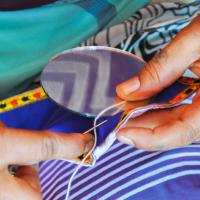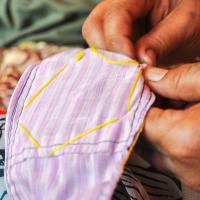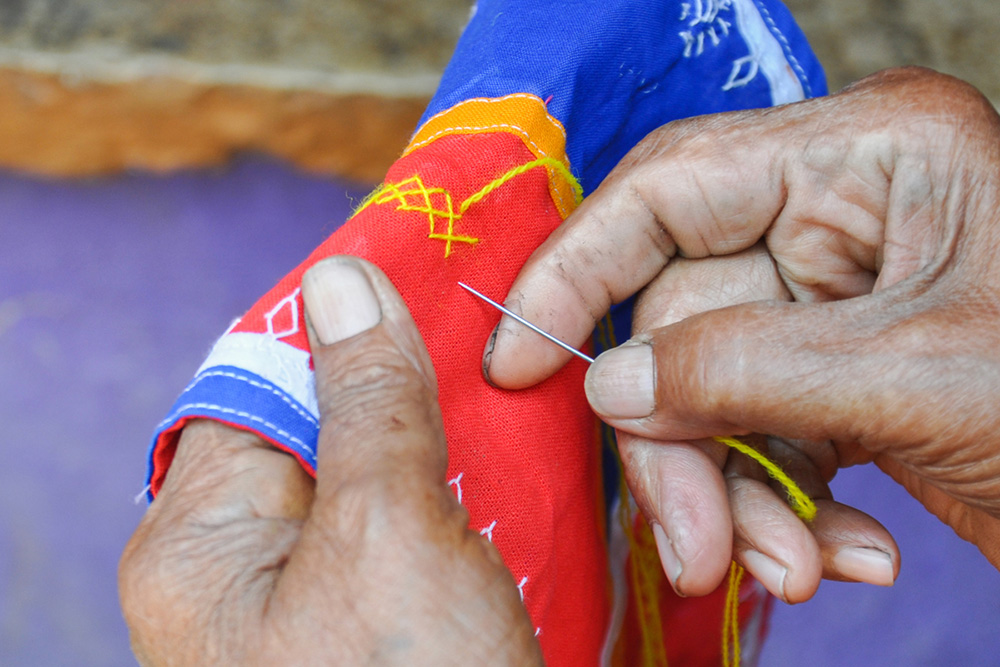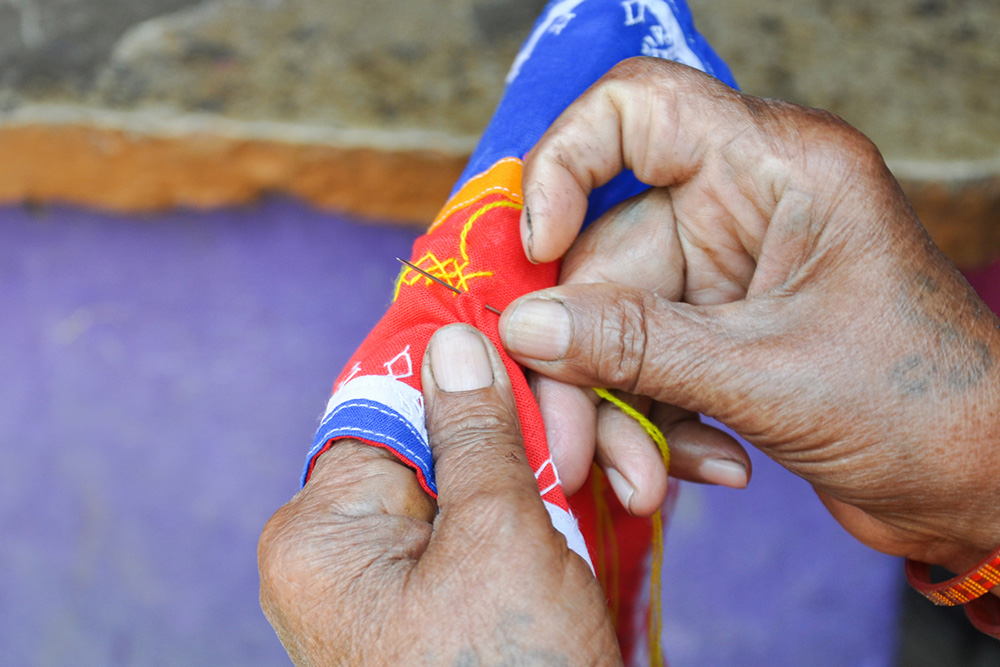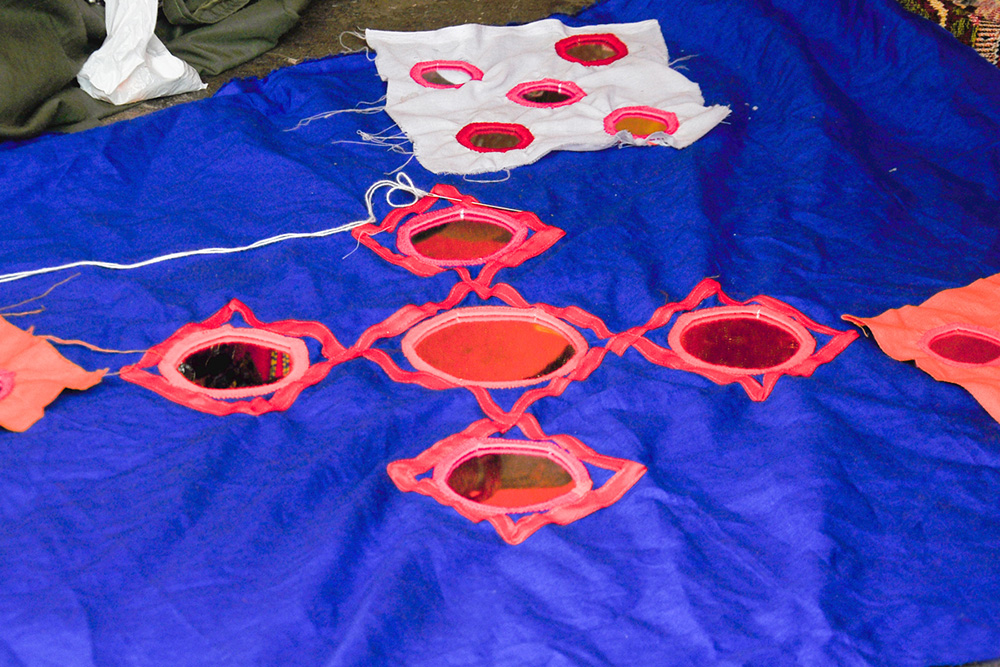Design Gallery
Lambani Embroidery Making - Yadgiri, Karnataka
Gypsy Art
by
Lambanis are also known as Banjaras. They belong to a tribal group with nomadic heritage who migrated from Marwar and resided in southern and middle India. The women of this community hold loyalty to their traditional form of costume, which is the most colourful and elaborate of any tribal group in India. Lambani and Kutch embroidery look similar because of their mirror work, but shells and coins used for Lambani work are different in style. This practice of hand embroidery and mirror work is mainly used on the traditional dresses that are given to their daughters for their weddings. These conventional clothes reflect their love of life that evolved across the centuries to suit the social conditions and local climate.
Lambani embroidery combines mirror work, cross-stitch, overlaid, and quilting stitches with the borders of applique patchwork. Initially, a base cloth of the desired colour is chosen. Usually, the dark blue or red-coloured fabric is used as a base fabric. Mirror or coins are stitched to the base cloth by using the regular needle and thread, and the decorative patterns of embroidery are made. The applique works are attached afterward as the embellishments. These are done in a typical applique technique. Small pieces of fabric are cut into triangles and squares, which are later stitched to the base cloth. The borders of the fabric are turned in neatly and stitched. These applique triangles are usually stitched as borders to create a charming pattern on the clothing. As the final procedure, the extras of the thread are cut off and set ready to be worn or gifted.
For more details:
https://www.dsource.in/resource/lambani-embroidery-yadgiri-karnataka

